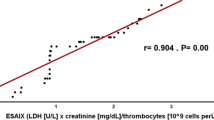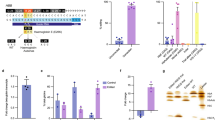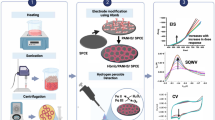Abstract
THE HbO2 dissociation curves of haemolysates of the newt (Triton cristatus) have been studied at different temperatures. Blood samples were collected from single animals in 0.6 per cent NaCl solution containing EDTA as anticoagulant and centrifuged to remove the serum. The packed washed red cells were then treated with distilled water containing a drop of CC14 and haemolysates were separated in a Sorvall refrigerated centrifuge at 15,000 r.p.m.
This is a preview of subscription content, access via your institution
Access options
Subscribe to this journal
Receive 51 print issues and online access
$199.00 per year
only $3.90 per issue
Buy this article
- Purchase on SpringerLink
- Instant access to full article PDF
Prices may be subject to local taxes which are calculated during checkout
Similar content being viewed by others
References
Sorcini, M., Orlandi, M., and Tentori, L., Abstr. 38th Meeting Soc. Ital. Biol. Sperim., 235 (Idelson, 1969, in the press).
Goldberg, Clin. Chem., 4, 485 (1958).
Leggio, T., and Morpurgo, G., Ann. First Super. Sanità, 4, 373 (1968).
Lenfant, C., Torrance, J., English, E., Finch, C. A., Reynafarje, C., Ramos, J., and Faura, J., J. Clin. Invest., 47, 12 (1968).
Benesch, E., Benesch, R. E., and Yu, C. I., Proc. US Nat. Acad. Sci., 59, 562 (1968).
Author information
Authors and Affiliations
Rights and permissions
About this article
Cite this article
MORPURGO, G., BATTAGLIA, P. & LEGGIO, T. Negative Bohr Effect in Newt Haemolysates and its Regulation. Nature 225, 76–77 (1970). https://doi.org/10.1038/225076a0
Received:
Revised:
Issue date:
DOI: https://doi.org/10.1038/225076a0



